Cornell Cup Finalists
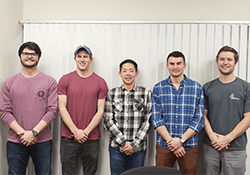
Control Moment Gyroscope (CMG)
WPI
Our goals are to design, build, and test a palm-sized control moment gyroscope (CMG), a torque actuator typically used for spacecraft attitude control. We aim to explore non-traditional CMG applications through the use of a dashboard UI displaying real-time dynamic and performance metrics. Through our research, we are designing graduate-level course material on the implementation of our modular CMG design for specific applications.
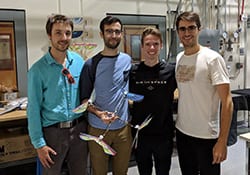
FWMAV (Flapping-Wing Micro Air Vehicle) Project
UC Irvine
Recent advancements in flight controller hardware and electronics have allowed for a surge in the performance capabilities of small-scale UAVs. However, as far as flying technology has come in recent years, man-made flying machines are still outperformed by the stability, maneuverability, and agility of some flying birds and insects. By combining bio-inspired flapping-wing mechanisms with modern UAV technology, the Flapping-Wing Micro Air Vehicle (FWMAV) Project has constructed a highly-agile micro UAV with new transformational flight dynamics.
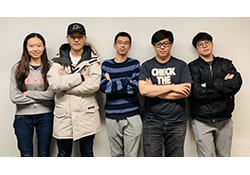
Garbage Collecting Boat (GCB)
Purdue University
Water pollution is a major concern in today’s society. One particular problem is water pollution such as floating garbage on the water surface. As a partial solution to these issues, this team presents the creation of a portable Garbage Collecting Boat or “GCB” that is capable of collecting floating garbage on the water surface controlled remotely by a user interface.
The GCB will offer this functionality through a unique circuit design and controls system such that water floating garbage could be collected efficiently and the GCB is portable to cover the cleaning from location to location. The GCB will also utilize several designed systems that cooperate with each other to perform the cleaning job and provide all relative information from the working environment to the remote user interface. Ultimately the GCB will be tested in both ideal environment and natural water area as a new viable alternative for small area water cleaning.
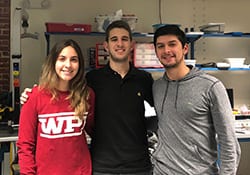
PhleAid: Automated Phlebotomy Assistant
WPI
PhleAid, the Automated Phlebotomy Assistant, implements a combination of three subsystems: a vial selection system, a vial handling and labeling system and a blood verification system; to simplify and support the phlebotomy process and well as minimize pre-analytical laboratory errors. The vial selection system chooses the appropriate vial for each test through a graphical input and decision-making system that utilizes a microprocessor and test database. The vial handling and labeling system minimizes user contact with the blood specimen by implementing our designed hardware, stepper motors and proximity sensors. Additionally, a bar code scanner is implemented to identify each blood vial. Finally, the blood verification system utilizes a series of photo diodes, LED lights and amplifiers to detect the level of blood inside the vial. This system ensures that the volume of blood obtained is sufficient for testing.

Preventative Care Knee Exoskeleton
WPI
The increasing ageing population frequently suffers from knee joint degeneration. This demographic has limited access to preventative injury solutions due to the high medical device costs, thus impacting mobility, independence, and safety. This project aims to develop a low cost, customizable assistive knee exoskeleton for activities of daily living. This device is intended to aid patients with degenerative knee joint conditions.
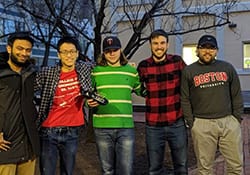
RiverSonde
Boston University
Humans have relied on fresh and saltwater rivers for transportation, clean drinking water, irrigation, and food since the earliest recorded history. Compared to oceans and other large bodies of water, however, rivers are significantly understudied, especially with respect to the effects of climate change. In an effort to close this research gap, we have set out to develop the RiverSonde, a low-profile underwater sensor suite that enables inexpensive remote collection of water quality data from rivers and streams. We’ve designed RiverSonde to be hydroelectrically-powered by a river’s natural current, making it deployable in low-sunlight areas, and mesh-networking-ready, meaning a multiple-sonde network can be deployed to take remote measurements even in areas without cellular coverage. By implementing sensors and electronics that are typically only found in $3000+ laboratory probes while still keeping RiverSonde’s base cost under $500, we hope to give budget-constrained research and regulatory agencies a powerful new tool to help preserve our rivers for generations to come.
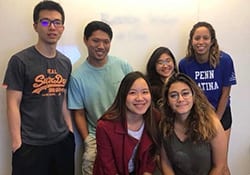
S.S. MAPR
University of Pennsylvania
S.S. MAPR is an autonomous surface vehicle that measures water quality metrics and takes samples at varying depths throughout the Schuylkill and Delaware Rivers. It is equipped with sensors to measure dissolved oxygen and temperature, as well as a water sampling mechanism that can pump samples at desired depths determined by the user. Given its low cost and faster speed, S.S. MAPR can be frequently deployed to gather measurements and samples to model water quality, ensure compliance with regulations, and quickly identify critical changes across the water body.
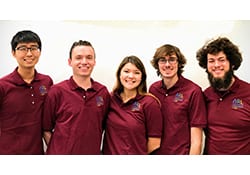
Team Icarus
Virginia Tech
Icarus Arm Exo will develop an active exoskeleton that will be suitable for industrial workers. The design will incorporate electromechanical components that can adjust the strength of gravity compensation as well as offer dynamic trajectory assistance. In this way, if a user wearing the exoskeleton needs to hold a heavy tool or perform a repetitive task, the exoskeleton can alleviate the forces on the shoulder and arm and prevent discomfort. The exoskeleton will be low profile, thereby minimizing any interference with a worker’s environment.

Team TerraNova
University of Pennsylvania
The exploration of lunar skylights and caves is vital to the progression of scientific inquiry because it provides valuable insights into the moon’s geologic history, and holds the potential to provide safe havens for humans and resource mining opportunities. The objective of this project is to enable the exploration of these uncharted spaces. TerraNova is a hybrid jumping and wheeling mechanical robotic architecture with superior traversability specifically designed for the exploration of the lunar subsurface.
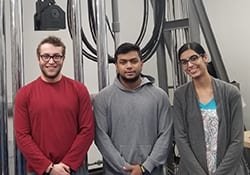
The Theoretical & Applied Mechanics Group
Drexel University
Autodesk Fusion 360 Design Award
A team of three undergraduate students in majors including mechanical, electrical and computer engineering, and business was formed to develop a connection between IoT and aerospace structural health monitoring. The team will leverage sensing, computing and data post-processing capabilities in the lab using an actual test case to demonstrate the performance of the proposed IoT framework.
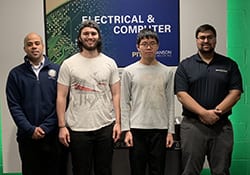
V2 Communications
University of Pittsburgh
The goal of V2 communications is to develop a reliable inter-vehicle communication network that can interface the real-time driving data from surrounding vehicles. The system will be comprised of an application MCU and a wireless network processor both based on ARM Cortex-powered microcontrollers. The system will use sensor fusion and machine learning techniques to monitor vehicle conditions. Our team’s hope is to allow vehicles to share information amongst themselves and lead to less accidents and more traffic throughput capacity on the road.
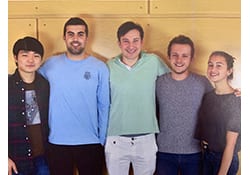
Vulcan IoT
Boston University
Vulcan IoT is a cheap, low-power consumption IoT device which monitors humidity, temperature, and soil dryness to preemptively detect when and where the next wildfire will occur. By integrating machine learning algorithms, trained on 50 years of fire-inducing weather patterns, we analyze the IoT data via AWS and assess the danger of the current weather conditions in real time to notify responsible agencies so that they can contain the wildfires.
Cornell Cup Semifinalists
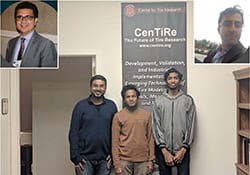
CenTiRe
Virginia Tech
The project revolves around measuring real-time tire-road dynamic variables and its corresponding application in optimizing vehicle control algorithms, improving structural tire-health monitoring systems and developing an in-car entertainment module for displaying these dynamic parameters.
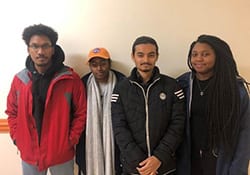
Team Automoe
Howard University
This project aims to develop light weight cybersecurity schemes, privacy aware communications, adaptive speed control, automatic braking, rerouting, information sharing using wireless access technologies and display vehicle’s status information. The final product consists of three prototype cars that can move around autonomously with such features. Implementation of a secure smart-system for autonomous vehicles will reduce the number of accidents caused by drunk driving, distracted or reckless driving, speeding, and blind-spots which allows for overall safer transportation and more productive commute times.
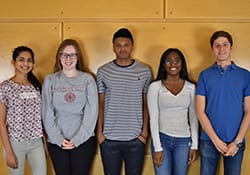
Team Smart Epipen
Boston University
EpiPen epinephrine auto injectors are prescribed to millions of Americans each year to treat allergen-induced anaphylaxis. Our Smart EpiPen system will consist of an EpiPen case that detects when the EpiPen is removed and contacts a specified support circle with the user’s GPS location. The case will also communicate with a wearable component that will notify the wearer if they leave their EpiPen in another room. These components will be paired with a web application where the user can submit customized information such as support circle contact numbers, and where the emergency history of the case will be tracked.
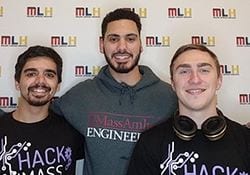
Team Zipcart
UMass Amherst
Checkout aisles in retail stores are inefficient, there are better ways to process transactions that don’t involve waiting in long lines for a cashier. In stores, every item is marked with a barcode that uniquely identifies it, these barcodes can be processed using computer vision techniques. Our team will create an embedded system for shopping carts that will process orders in a passive manner, requiring no intervention from the shopper. As items are placed in the cart, a camera will “scan” the item and send data to the cloud to process the order.
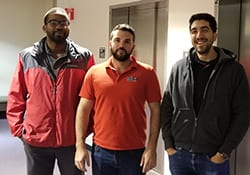
UFARMs
University of Central Florida
Community food projects are comprehensive projects that incorporates the participation of local communities in developing innovative approaches that foster solutions for improving access to food systems and reduce food scarcity. The goal of the UFARM system is to create an assistant for small to community scale urban gardens that will monitor the conditions including the crops, soil and the surrounding and respond to the conditions when necessary and alert the network of users when intervention is required. The proposed system will actively monitor the soil and crop conditions with various sensors and regional data including soil moisture, electrical conductivity, ambient temperature, relative humidity and more. The sensor information will be tracked and compared to stored values and displayed on the GUI for the user’s convenience. The UFARM system of tracking sensor and regional weather data isn’t a novel approach but utilizing this data to urban agriculture applications while maintaining comparable cost is a worthwhile endeavor.



